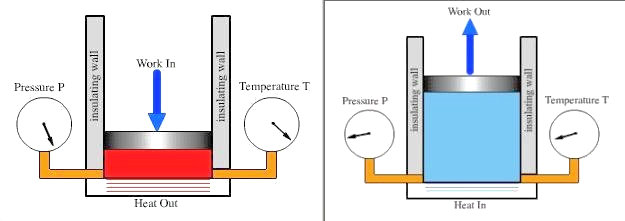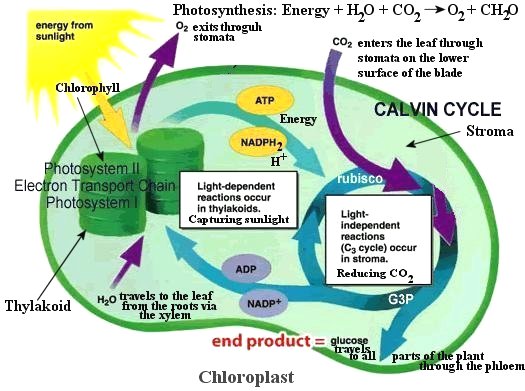 |
of classical thermodynamics: In a system isolated from the outside world, heat within a gas of temperature, T2, will flow in time, t, toward a gas of temperature, T1, where T2 > T1 and  T = T2 - T1, thus the system's total energy E is constant (via the first law of thermodynamics), while its free energy (work) F decreases, and its entropy S rises (via the second law of thermodynamics), until finally T = T2 - T1, thus the system's total energy E is constant (via the first law of thermodynamics), while its free energy (work) F decreases, and its entropy S rises (via the second law of thermodynamics), until finally  T T  0 at equilibrium. 0 at equilibrium.
|
Figure 02 Isolated System [view large image] |
Some literatures refer the isolated system as closed system, while the other systems are lumped together as open system. |
 |
a device that converts heat energy into mechanical energy or more exactly a system which operates with only heat and work passing across its boundaries. As work is done on the gas inside the chamber, the temperature and pressure increase and some heat will be transferred out of the system. When heat is transferred to the system, the gas expands, it does work on the surroundings and the temperature and pressure decrease. |
Figure 03 Closed System |
 |
 |
energy flow can lead to an increase, a decrease, or no net change at all in the entropy, S, of the system. Even so, the net entropy of system and its environment would still increase according to the second of thermo-dynamics. The ocean would be an example of an open system. Another good example would be the photosynthesis in plants as shown in Figure 05. Infusion of energy and exchange of matter are taking place inside the chloroplast resulting in the production of glucose, which is in a higher energy level. The system becomes nonequilibrium and will decay to the more stable form in the long run. |
Figure 04 Open System [view large image] |
Figure 05 Photosynthesis |